1. Male Pattern Hair Loss
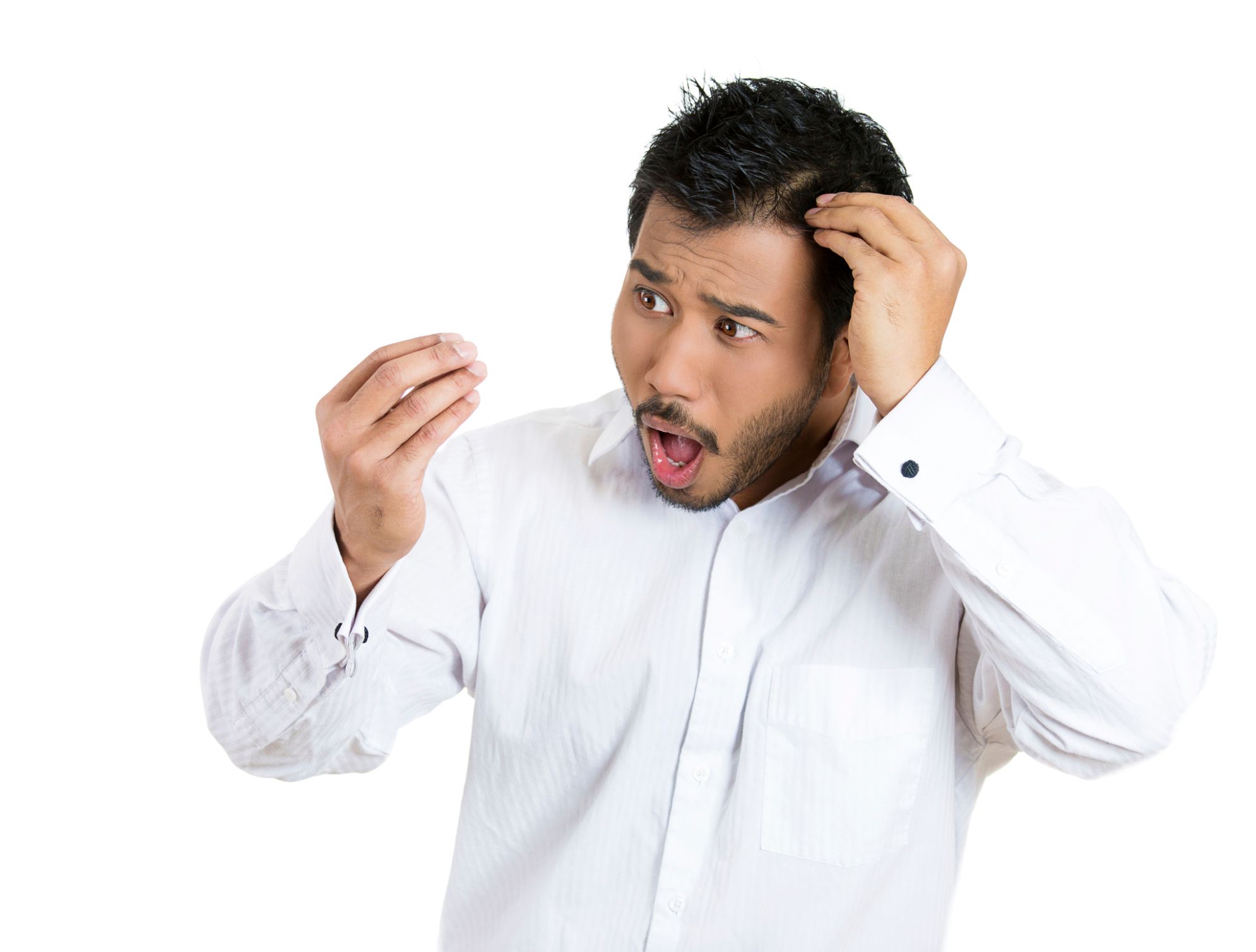
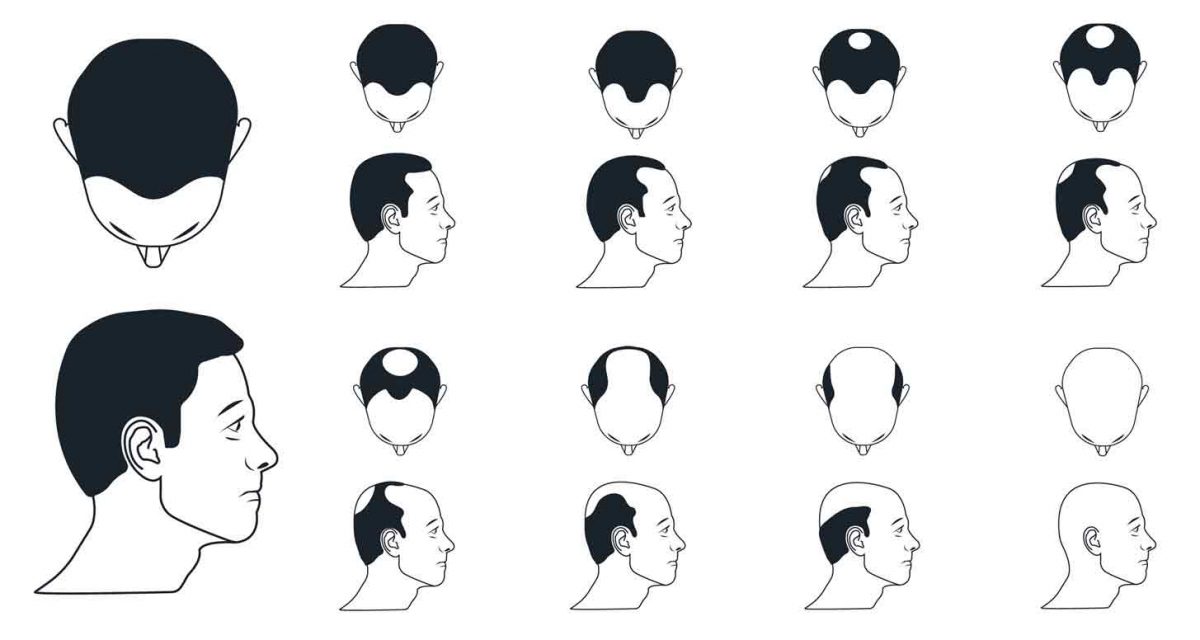
Presents as a gradual receding pattern, usually from the temples and crown in men. The degree of hair loss varies. Hair loss starts sometime in the twenties and gradually occurs over 20-30 years. However, some men go bald quickly within a few years.
2. Female Pattern Hair Loss
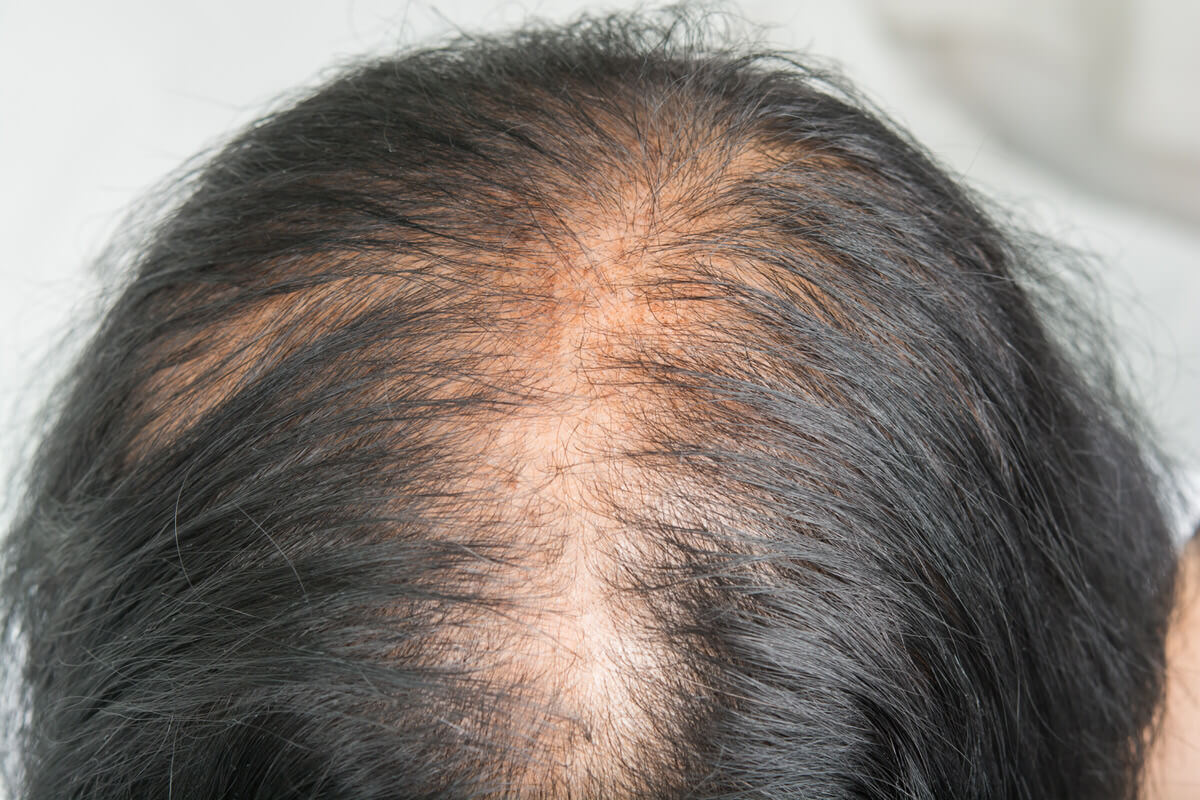
The most common form of female hair loss is the same as it is for men. It is also known as androgenetic alopecia (AGA).

In women, it begins with slight thinning of hair parting line or over the temples and classified as Grade I as in Ludwig Classification Scale. The hair loss then progresses to decreased volume and noticeable widening of the mid-line parting as in Grade II. Finally, in Grade III, there is diffuse thinning and the scalp can be seen clearly Unlike men whose hairline recedes and have bald patches, in women the hairline remains and they usually don’t go totally bald.
Causes of Female Pattern Hair Loss
- Genetics: significant and most common cause factor. The hair roots due to the hereditary factor, react more to the male sex hormones dihydrotestosterone(DHT). The hair growth phase is shortened and thus hair is not able to grow to a certain length. Hair becomes from strong and deeply pigmented hair(terminal hair) to downy, thin, lightly coloured hair( vellus hair). If hair loss as a result of DHT is not treated, the hair roots shrink further and further till hair regrowth becomes impossible.
- Polycystic ovarian syndrome (PCOS): a common hormone disorder usually associated with acne and excess facial and body hair as a result of increased levels of androgens. Increased level of androgen results in hair loss.
- Menopause: As production of estrogen declines the damaging effect of DHT on hair follicles becomes more prominent. Healthy hair becomes thin and lustreless.
Treatments For Male and Female Pattern Hair Loss
Treatment for both male and female pattern baldness is similar to the cause is the same.
Before treatment can start, a proper examination of the scalp is done. Blood tests are required for women to check thyroid, hormones, iron and DHT(dihydrotestosterone) levels.
Points of note
- Any hair lost won’t grow back on its own, if it is due to hormonal cause. Treatments are required to stimulate the growth of new hair and stop further loss.
- The treatments have to be medical as the most common cause of hair loss is a medical condition and only medical treatments will work.
- Treatment can never be stopped due to the continuous hormonal effect. Has to be a lifetime ongoing treatment. Once it becomes part of your daily routine, that hair on your head grows back and remain on the scalp.
Minoxidil
Minoxidil is an FDA approved medicine to treat both male and female pattern baldness. Minoxidil is applied onto the scalp every day to prevent further hair thinning and stimulate hair growth. It can take 6 months to a year for visible results. Side effects are itching, redness and dryness. Treatment must not stop or regrown hair will shed and hair loss will resume.
Propecia
Propecia (finasteride) is FDA approved for only male pattern baldness. It works by blocking the enzyme alpha-reductase that turns testosterone to DHT. This keeps hair from falling out of premature balding male scalps. It is not approved for females.
Side effects are sexual dysfunction, memory problems
Hair Regenerative Treatment
This is an innovative hair loss treatment that expedites hair regrowth as well as stops further hair loss.
Every hair follicle has a bulge of stem cells, which control hair growth cycles. Cells use growth factors to stimulate stem cells to in turn stimulate hair growth. A specially prepared cocktail of essential hair growth factors and vitamins, as well as monoxidil, is infused into the scalp. The mechanical method of microinfusion :
Stimulates dormant hair follicles
Improve the appearance of thinning hair
Promote fuller, thicker and healthier looking hair
Recommended for those who have mild to moderate hair loss. The treatment expedites the regrowth of hair on the scalp and hair regrowth is seen within 3 months and full growth occurs about 6 months onwards. Best results are seen after 5 in-clinic treatments.
AnteAGE Hair System

This is a hair system created for medical clinics so that patients can further boost hair regrowth after in-clinic hair regenerative treatments. It is also used as a maintenance treatment to promote lush hair and prevent future hair loss.
The system contains 1) stem cell stimulator 2) botanicals 3) micro-channel stamp that exfoliates and stimulates the scalp to respond to the serums.
Hair Growth Supplements
Supplements used in hair growth target regrowth of healthy hair. Supplements are required in those who would be nutritionally deficient like those who have been on a low calorie or bad diet, had serious illness or stress.
Bioxsine Dermagen
Bioxsine Dermagen tablet is a special formula containing important elements such as silicon, biotin, zinc, B complex and L-cysteine amino acids all of which promote hair growth and strengthens the hair structure. Only available in medical clinics The tablets are dispensed together with Bioxsine Dermagen Forte hair spray and shampoo. Bioxsine products help to prevent hair loss and promote hair growth and revitalise weak hair roots and provide resilience, volume, shine and vibrancy to the hair.
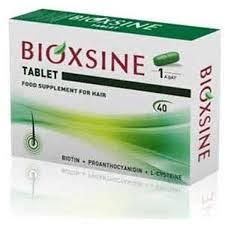
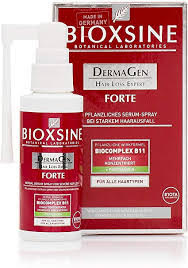
Biotin
Biotin plays a significant role in the growth of healthier and thicker hair. It is also one of the only natural hair loss treatments backed up by science.
Zinc
Taking 50mg of zinc has been shown to be beneficial for both male and female hair loss, especially for hair loss and hirsutism in PCOS. Zinc also promotes prostate health and immunity.
Saw Palmetto
Saw palmetto blocks the enzyme alpha-reductase which converts testosterone to DHT. By inhibiting the enzyme hair loss can be significantly reduced. Saw palmetto promotes prostate health in men.
3. Telogen Effluvium
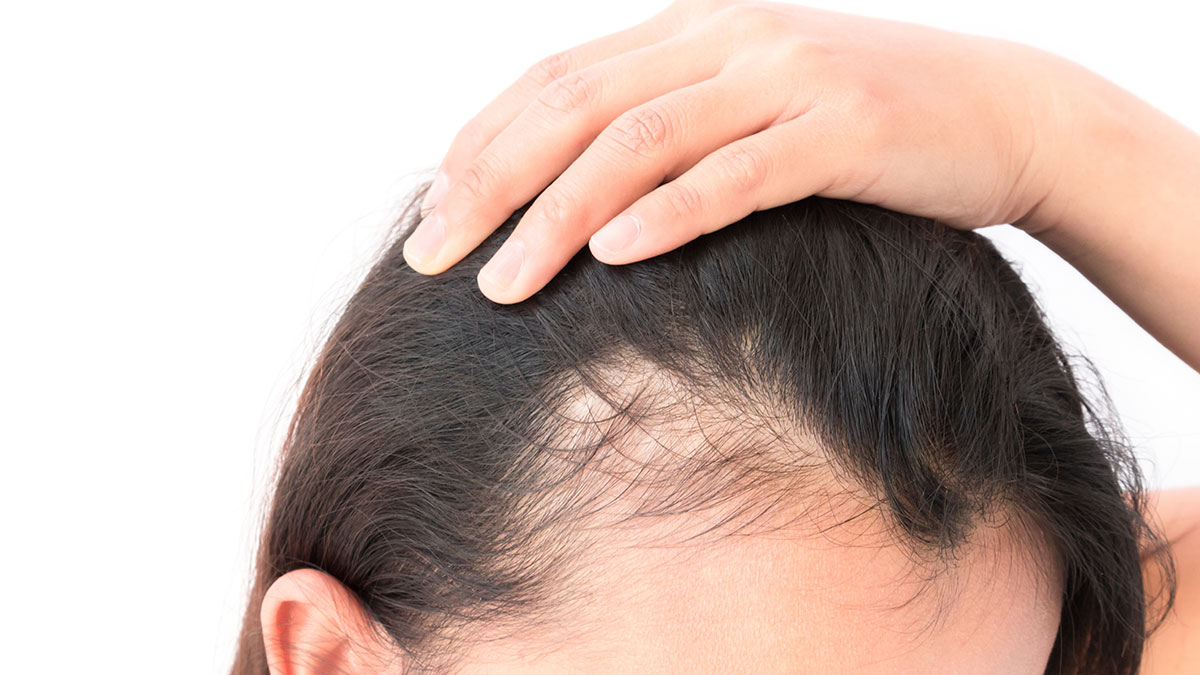
About 85% of hair on the head are inactive growing (Anlagen)phase and the others are in resting (telogen) phase. Usually, the hair is in the anagen phase for 2-4 years, then enters the telogen phase that lasts for 2-4 months before falling out and being replaced by new growing hair.
In telogen effluvium also known as stress-induced alopecia or diffuse alopecia, the body due to a severe change or shock pushes more hair into the telogen phase, resulting in excessive shedding of hair. Usually, shedding occurs 2-4 months after the stressful event.
What Does It Look Like?
The picture is of generalised hair thinning over the scalp. Hair thickness decrease resulting in a reduction of volume.
Causes of Telogen Effluvium
- Major psychological stress
- Severe illness
- Extreme weight loss
- Extreme change of diet
- Abrupt hormonal changes as with childbirth
- Hypothyroidism or Hyperthyroidism
- Iron deficiency
- Medication containing hormones (androgen )such as birth control pills
- Tight ponytails or braids ( traction alopecia)
Treatment of Telogen Effluvium
Examination of scalp and blood test to check levels of thyroid hormones and iron
- Correction of any deficiency of hormones, minerals and vitamins
- Hair lotion containing growth peptides
- Oral hair growth supplements containing essential vitamins and minerals are very important for regrowth of thick hair.
- In clinic hair loss treatment
Take note that hair may continue to fall out in the first 1-2 months of treatment.
Prognosis is very good with good hair regrowth from six months onwards.
What Can I Do To Reduce Hair Loss
- Do not wear tight braids or tight ponytails as it results in traction alopecia.
- Limit treatments that can result in hair damage such as perming, straightening and hair extensions.
- Use a wide-tooth comb rather than a brush when combing wet hair.
- Eat a healthy diet and avoid drastic weight loss.




